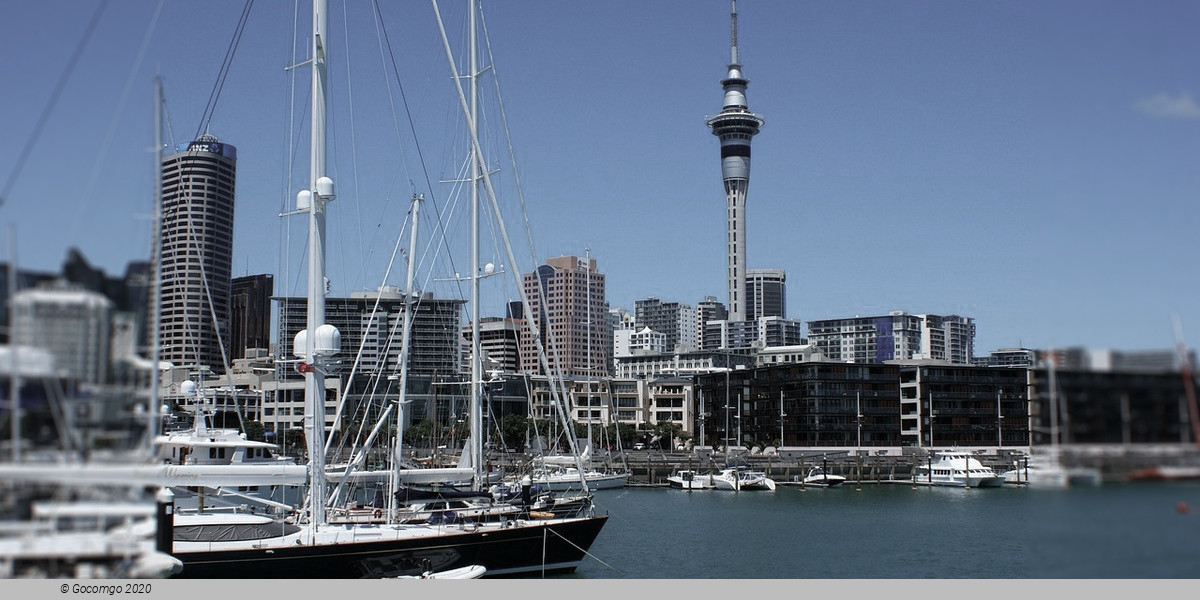Auckland

Auckland is a large metropolitan city in the North Island of New Zealand. The most populous urban area in the country, Auckland has an urban population of about 1,470,100 (June 2020). It is located in the Auckland Region—the area governed by Auckland Council—which includes outlying rural areas and the islands of the Hauraki Gulf, resulting in a total population of 1,717,500. Auckland is a diverse, multicultural and cosmopolitan city, home to the largest Polynesian population in the world. The Māori-language name for Auckland is Tāmaki Makaurau, meaning "Tāmaki desired by many", in reference to the desirability of its natural resources and geography. The word Tāmaki itself generally meaning an omen.
History
Early history
The isthmus was settled by Māori circa 1350, and was valued for its rich and fertile land. Many pā (fortified villages) were created, mainly on the volcanic peaks. The Māori population in the area is estimated to have been about 20,000 before the arrival of Europeans. The introduction of firearms at the end of the eighteenth century, which began in Northland, upset the balance of power and led to devastating intertribal warfare beginning in 1807, causing iwi who lacked the new weapons to seek refuge in areas less exposed to coastal raids. As a result, the region had relatively low numbers of Māori when settlement by European New Zealanders began.
On 20 March 1840 in the Manukau Harbour area where Ngāti Whātua farmed, paramount chief Āpihai Te Kawau signed Te Tiriti o Waitangi the Treaty of Waitangi. Ngāti Whātua sought British protection from Ngāpuhi as well as a reciprocal relationship with the Crown and the Church. Soon after signing the Treaty, Te Kawau offered land on the Waitematā Harbour to the new Governor of New Zealand, William Hobson, for his new capital, which Hobson named for George Eden, Earl of Auckland, then Viceroy of India. Auckland was founded on 18 September 1840 and was officially declared New Zealand's capital in 1841, and the transfer of the administration from Russell (now Old Russell) in the Bay of Islands was completed in 1842. However, even in 1840 Port Nicholson (later renamed Wellington) was seen as a better choice for an administrative capital because of its proximity to the South Island, and Wellington became the capital in 1865. After losing its status as capital, Auckland remained the principal city of the Auckland Province until the provincial system was abolished in 1876.
In response to the ongoing rebellion by Hōne Heke in the mid-1840s, the government encouraged retired but fit British soldiers and their families to migrate to Auckland to form a defence line around the port settlement as garrison soldiers. By the time the first Fencibles arrived in 1848, the Northern War had concluded. Outlying defensive towns were then constructed to the south, stretching in a line from the port village of Onehunga in the west to Howick in the east. Each of the four settlements had about 800 settlers; the men were fully armed in case of emergency, but spent nearly all their time breaking in the land and establishing roads.
In the early 1860s, Auckland became a base against the Māori King Movement, and the 12,000 Imperial soldiers stationed there led to a strong boost to local commerce. This, and continued road building towards the south into the Waikato, enabled Pākehā (European New Zealanders) influence to spread from Auckland. The city's population grew fairly rapidly, from 1,500 in 1841 to 3,635 in 1845, then to 12,423 by 1864. The growth occurred similarly to other mercantile-dominated cities, mainly around the port and with problems of overcrowding and pollution. Auckland's population of ex-soldiers was far greater than that of other settlements: about 50 percent of the population was Irish, which contrasted heavily with the majority English settlers in Wellington, Christchurch or New Plymouth. Most of the Irish (though not all) were from Protestant Ulster. The majority of settlers in the early period were assisted by receiving cheap passage to New Zealand.
Modern history
Trams and railway lines shaped Auckland's rapid expansion in the early first half of the 20th century. However, after the Second World War the city's transport system and urban form became increasingly dominated by the motor vehicle. Arterial roads and motorways became both defining and geographically dividing features of the urban landscape. They also allowed further massive expansion that resulted in the growth of suburban areas such as the North Shore (especially after the construction of the Auckland Harbour Bridge in the late 1950s), and Manukau City in the south.
Economic deregulation in the mid-1980s led to dramatic changes to Auckland's economy and many companies relocated their head offices from Wellington to Auckland. The region was now the nerve centre of the national economy. Auckland also benefited from a surge in tourism, which brought 75 percent of New Zealand's international visitors through its airport. Auckland's port handled 31 percent of the country's container trade in 2015.
The face of urban Auckland changed when the government's immigration policy began allowing immigrants from Asia in 1986. According to the 1961 census data, Māori and Pacific Islanders comprised 5 percent of Auckland's population; Asians less than 1 percent. By 2006 the Asian population had reached 18.0 percent in Auckland, and 36.2 percent in the central city. New arrivals from Hong Kong, Taiwan and Korea gave a distinctive character to the areas where they clustered, while a range of other immigrants introduced mosques, Hindu temples, halal butchers and ethnic restaurants to the suburbs.

